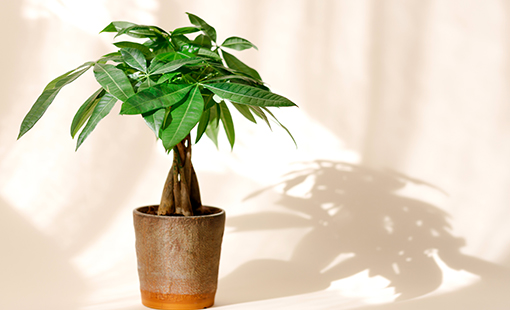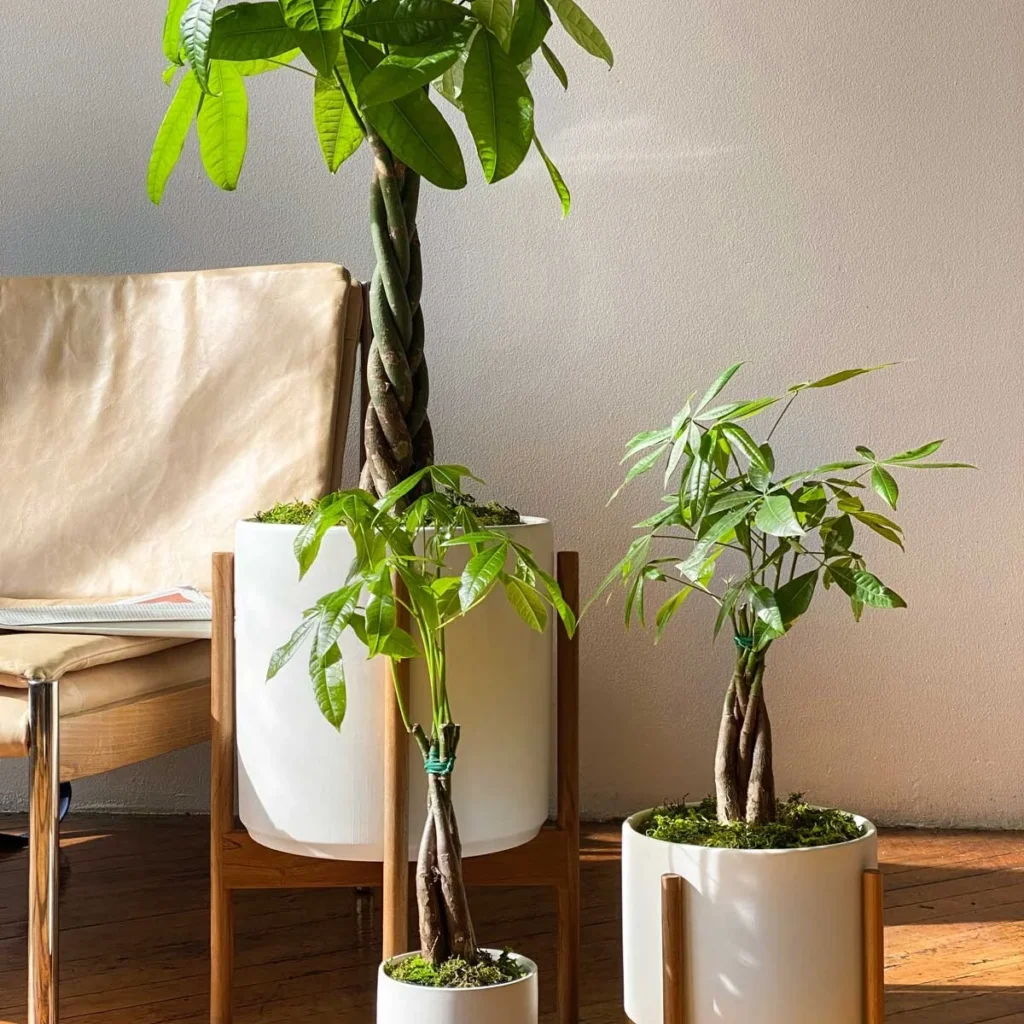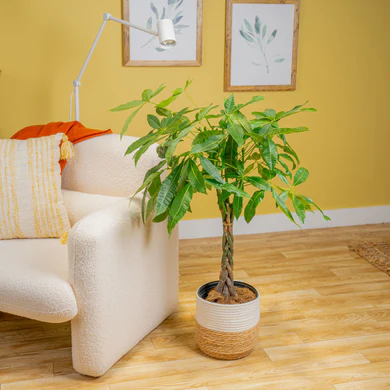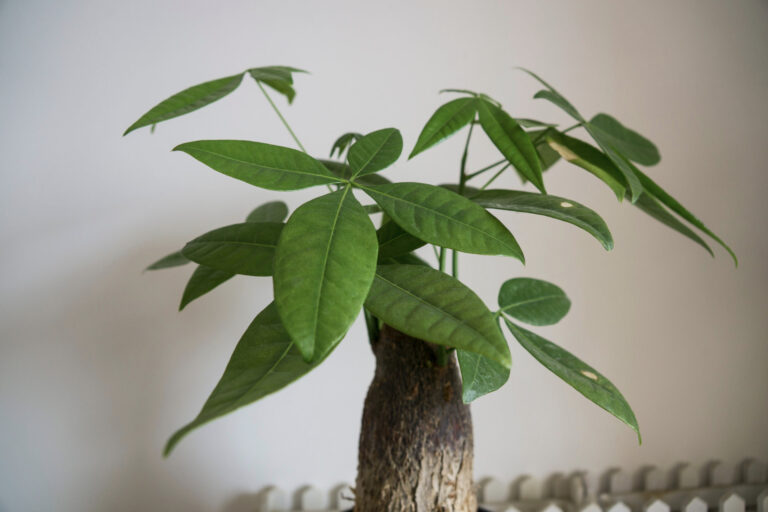The Money Tree (Pachira aquatica) has become one of the most loved indoor plants worldwide—not only for its lush green beauty but also for the symbolic prosperity it brings. Rooted deeply in Feng Shui traditions, this hardy plant is believed to attract wealth, good fortune, and harmony into any space. Beyond its mystical allure, the Money Tree is a resilient and low-maintenance houseplant, making it a perfect choice for both beginners and seasoned gardeners.
In this guide, we will dive into the fascinating history of the Money Tree, explore its symbolism, and provide practical, step-by-step care rituals to ensure yours thrives—bringing both vibrant greenery and positive energy into your home.
The Story Behind the Money Tree

The legend of the Money Tree originates from East Asia. According to folklore, a poor farmer once prayed for prosperity and found this unique plant growing in his field. Taking it as a sign of luck, he cultivated the tree, sold its seeds, and soon became wealthy. Over time, the Money Tree became associated with abundance, financial stability, and good fortune.
In Feng Shui practice, the plant’s braided trunk is thought to “lock in” good energy, while its five-lobed leaves symbolize the five elements: wood, water, fire, earth, and metal. When balanced, these elements are said to create prosperity and harmony in life.
Why You Should Grow a Money Tree

- Symbol of prosperity: Brings luck and fortune when placed in homes or businesses.
- Air purifier: Filters toxins and improves indoor air quality.
- Low-maintenance: Hardy plant that tolerates occasional neglect.
- Aesthetic appeal: Its braided trunk and glossy green leaves add a tropical, calming vibe.
Care Rituals for Thriving Green Growth

1. Light Requirements
The Money Tree thrives in bright, indirect light. Too much direct sunlight can scorch the leaves, while too little light can stunt growth.
- Place it near a south- or east-facing window with filtered light.
- In low-light rooms, a grow light can supplement its needs.
Feng Shui Tip: For maximum prosperity, place your Money Tree in the wealth corner of your home—the far-left corner from your entryway.
2. Watering Rituals: Striking the Balance
Overwatering is the most common mistake with Money Trees. These plants dislike soggy roots but also should not be left bone-dry.
- Water once every 1–2 weeks, depending on the season.
- Check the top 2 inches of soil—if dry, it’s time to water.
- Always use a pot with drainage holes to prevent root rot.
- Reduce watering in winter when growth slows down.
Ritual Practice: As you water, visualize abundance flowing into your life. This mindful care adds a positive energy connection.
3. Soil and Potting Mix

Money Trees prefer well-draining, nutrient-rich soil.
- A peat moss, perlite, and sand mix works best.
- Repot every 2–3 years to refresh soil and allow growth.
- Use a slightly larger pot each time to avoid root crowding.
4. Humidity and Temperature
As a tropical plant, the Money Tree loves moderate to high humidity.
- Keep it in rooms with 50–60% humidity.
- Mist leaves occasionally or use a humidifier in dry climates.
- Ideal temperature range: 65–80°F (18–27°C). Avoid cold drafts and sudden changes.
5. Fertilizing for Prosperity
Feed your Money Tree to keep it lush and thriving.
- Use a balanced liquid fertilizer (10-10-10) once a month during spring and summer.
- Avoid fertilizing in winter when the plant is dormant.
- Over-fertilizing can harm roots, so stick to moderation.
6. Pruning and Shaping
Pruning not only keeps the plant healthy but also maintains its elegant shape.
- Remove yellow or dead leaves regularly.
- Trim leggy stems to encourage bushier growth.
- Some gardeners gently braid new flexible stems to enhance its signature trunk look.
Spiritual Note: Pruning symbolizes letting go of negativity to invite fresh energy.
7. Propagation for More Prosperity

You can multiply your Money Tree through cuttings.
- Take a 6-inch stem cutting with at least two nodes.
- Place in water or soil until roots develop.
- Transplant into a small pot with proper drainage.
Sharing propagated Money Trees with loved ones is thought to spread good fortune.
Common Money Tree Problems and Solutions
- Yellow Leaves – Usually caused by overwatering. Allow soil to dry before watering again.
- Drooping Leaves – Could indicate underwatering or sudden temperature changes.
- Brown Leaf Tips – Low humidity or too much fertilizer. Mist leaves or flush soil.
- Pests (spider mites, aphids, mealybugs) – Wipe leaves with neem oil or insecticidal soap.
Money Tree and Feng Shui Placement
For maximum prosperity, Feng Shui emphasizes placement:
- Wealth Corner (Southeast): Brings financial growth.
- Office Desk: Attracts career success.
- Living Room: Promotes harmony and balance.
- Avoid placing in bathrooms, as water energy can “flush away” prosperity.
Rituals for Luck and Prosperity
- Morning Greeting: Spend a few seconds appreciating your Money Tree daily—it fosters positivity.
- New Year’s Blessing: Clean its leaves, refresh soil, and set intentions for prosperity.
- Gift of Abundance: Gifting a Money Tree symbolizes wishing success for friends and family.
Conclusion
The Money Tree is more than just an ornamental houseplant—it’s a living symbol of prosperity, luck, and balance. With the right care rituals—mindful watering, proper light, balanced feeding, and thoughtful placement—you can unlock both its botanical and symbolic magic. Whether you grow it to improve your home’s greenery or to attract abundance into your life, this plant thrives on care, intention, and a touch of belief.
By nurturing your Money Tree, you’re not just growing a plant—you’re cultivating a mindset of growth, positivity, and prosperity.





Leave A Comment